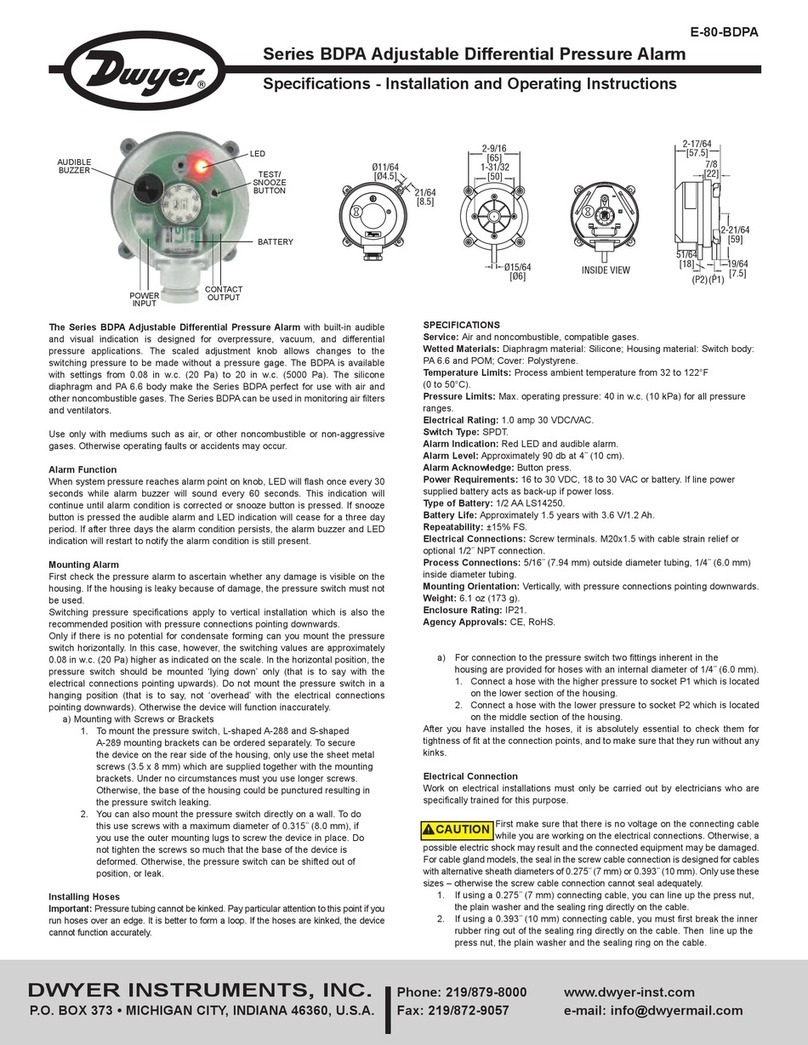AN24 & AN28 Annunciators Instruction Manual
3
Table of Contents
Introduction..........................................................................................................2
Ordering Information...........................................................................................2
Quick Setup Guide...............................................................................................5
Sequence Selection.........................................................................................5
NO/NC Inputs...................................................................................................5
Basic Connections..........................................................................................5
Specifications.......................................................................................................5
General.............................................................................................................6
Input..................................................................................................................6
Relays...............................................................................................................6
Compliance Information......................................................................................7
Safety................................................................................................................7
Electromagnetic Compatibility.......................................................................7
Safety Information ...............................................................................................7
Installation............................................................................................................7
Unpacking........................................................................................................7
Panel Mounting................................................................................................7
Dimensions......................................................................................................8
Connections.....................................................................................................8
Connectors Labeling .....................................................................................8
Power Connections.......................................................................................9
Signal Connections .......................................................................................9
Relays and 24 V Output Connections...........................................................9
Switching Inductive Loads...........................................................................10
External Input Types ...................................................................................10
Multiple Unit First-Out Indication Connections............................................10
Setup and Programming...................................................................................11
Overview.........................................................................................................11
Front Panel Pushbuttons and Status LED Indicators................................11
Full Function Test..........................................................................................11
Multiple Unit First-Out Indication.....................................................................11
Shared Front Panel Buttons.........................................................................11
Annunciator Sequence Selection ................................................................12
Sequence Programming..............................................................................12
Sequence Descriptions ...............................................................................12
Normally Open/Normally Closed Input Setup.............................................12
Programming NO/NC Inputs .......................................................................12
NO/NC Programming Example...................................................................13
Relay Operation.............................................................................................13
Relay 1 Operation .......................................................................................13
Relay 2 Operation .......................................................................................13
Relay Fail-Safe............................................................................................13
Programming Relay Fail-Safe.....................................................................13
Relay Fail-Safe Programming Example......................................................14
Relay Operation Overview ..........................................................................14
Audible Horn Enable/Disable .......................................................................14
Enabling/Disabling Silence Option..............................................................14
No Lock-In Sequence Option .......................................................................15
Reset to Factory Defaults.............................................................................15
Troubleshooting.................................................................................................15
Full Sequence Descriptions..............................................................................16
Features......................................................................................................16
Sequence Condition Descriptions...............................................................16
LED Condition Descriptions ........................................................................16
ISA Sequence A.............................................................................................16
ISA Sequence F2A.........................................................................................17




























